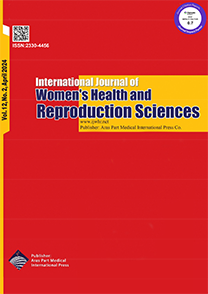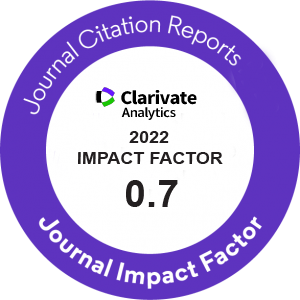| Original Article | |
| Socio-demographic Determinants of Infertility: A Study in Four Selected Provinces of Iran | |
| Hajieh Bibi Razeghi Nasrabad1, Meimanat Hosseini-Chavoshi2,3, Mohammad Jalal Abbasi-Shavazi4,5,6 | |
| 1Associate Professor of Demography, Faculty of Social Sciences, University of Tehran, Tehran, Iran 2Senior Research Fellow, University of Melbourne, Melbourne, Australia 3Honorary Senior Lecturer, Australian National University, Canberra, Australia 4Professor of Demography, University of Tehran, Iran 5Academy Fellow, Vienna Institute of Demography, Vienna, Austria 6Honorary Professor, Australian National University, Canberra, Australia |
|
|
IJWHR 2024; 12: 094-102 DOI: 10.15296/ijwhr.2024.6005 Viewed : 424 times Downloaded : 427 times. Keywords : Infertility, reproductive behavior, Fertility determinants, women, Iran |
|
| Full Text(PDF) | Related Articles | |
| Abstract | |
Objectives: Infertility is one of the reproductive health issues that not only affects infertile couple’s life, but it is a matter of demographic concerns on a vast scale. This study aims to examine the impact of socio-demographic factors on the incidence of infertility. Materials and Methods: We used data from our cross-sectional fertility survey conducted in 2017 in four selected provinces of Iran including Gilan, West Azarbaijan, Sistan and Baluchistan, and Yazd. Using a structured questionnaire, 4088 women of reproductive age were interviewed in the survey for their reproductive life history as well as their socio-demographic and economic condition. Bivariate (chi-square test), and multivariate (Multiple Logistic Regression) analyses are applied to the data to meet the aim of the study. P values less than 0.05 are considered statistically significant where differentials are tested. Results: The prevalence of current infertility according to clinical definition varied from 7.4% in Yazd, 8.6% in West Azerbaijan, 12.4% in Gilan, and 22.3% in Sistan and Baluchistan. Logistic regression analysis revealed a significant association between infertility and the age and age at marriage of women. Controlling for other socio-demographic variables probability of being infertile increases as women get married at an older age. In addition, women who lived in a household with the lowest socio-economic conditions were 80 percent more likely to experience infertility compared to those living in households with the highest socio-economic conditions. Living in Sistan and Baluchistan was also a strong predictor of infertility in the study resulting in a high odds ratio (3.050) compared with women living in Yazd province Conclusions: Women’s age and age at marriage are the most important demographic characteristics in explaining infertility and having a lower socio-economic condition trigger it. Since the age of marriage is increasing in Iran, it may affect primary infertility where childbearing is postponed to the late 30s and early 40s. |
Cite By, Google Scholar
Google Scholar
PubMed
Online Submission System
 IJWHR ENDNOTE ® Style
IJWHR ENDNOTE ® Style
 Tutorials
Tutorials
 Publication Charge
Women's Reproductive Health Research Center
About Journal
Publication Charge
Women's Reproductive Health Research Center
About Journal
Aras Part Medical International Press Editor-in-Chief
Arash Khaki
Mertihan Kurdoglu Deputy Editor
Zafer Akan






















